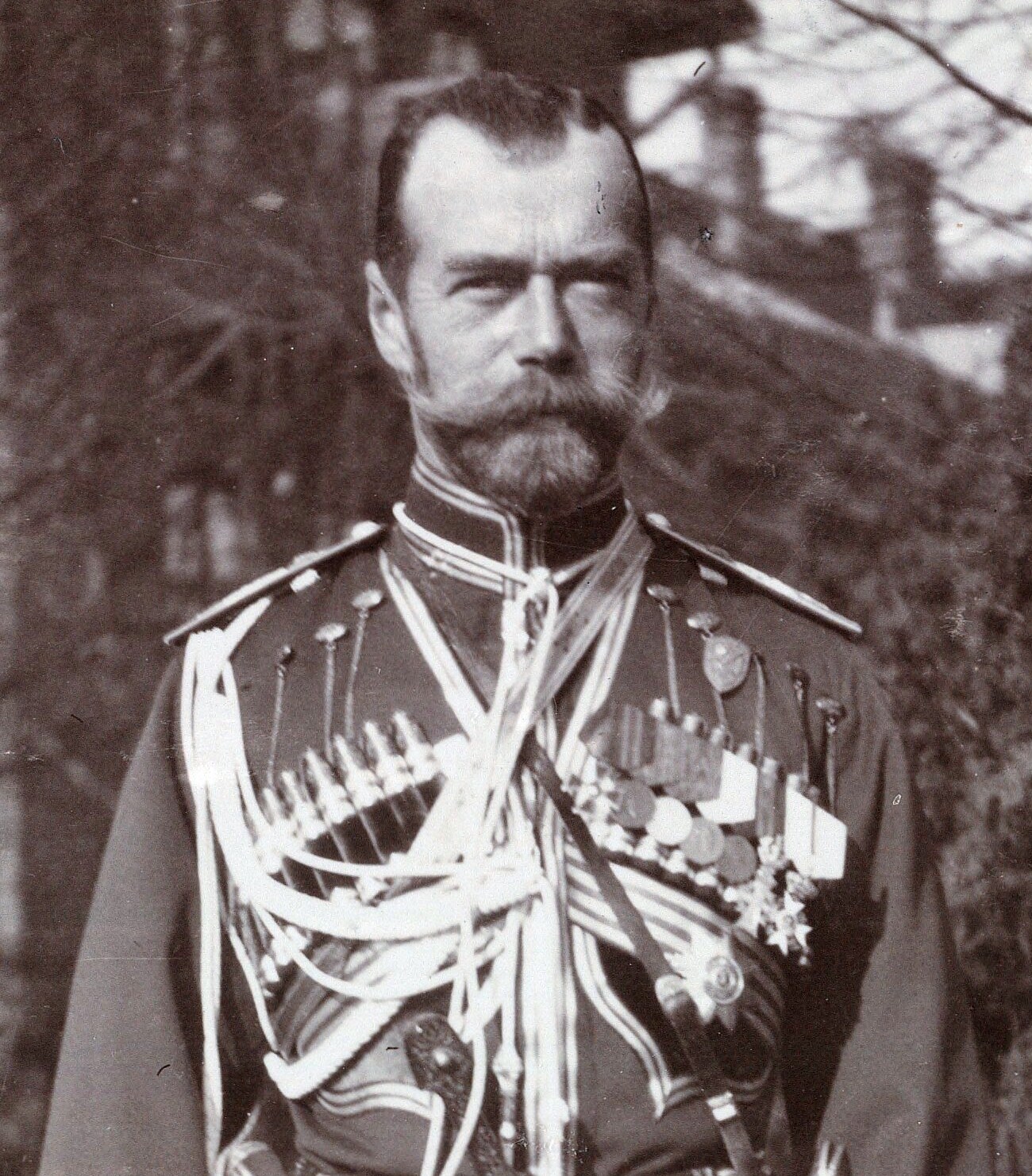How was the Soviet Union formed? The answer to that complex question actualized during the chaotic year of 1917, the third full year of World War I in Europe. Russia, along with most European nations at the time, was governed by a monarchy, in this case by the person of
Tsar Nicholas II, last ruler of the Russian Empire. His
accumulated wealth at the time of his death would be over $250 billion in today’s currency.
Tsar Nicholas II of Russia
Russia
entered World War I (at Nicholas' behest) both to support
Serbia against invasion by the
Austro-Hungarian Empire, and because of their alliance with France against the presumed common enemy of
Imperial Germany, who was led by Kaiser Wilhelm II. Wilhelm II was
Tsar Nicholas’ cousin, who was himself cousin to King George V of Great Britain.
Nicholas II (left) and King George V (right)
Widespread civil unrest and uneven Russian military successes on the
Eastern Front, along with desertions and the catastrophic living conditions of the Russian peasantry, forced the eventual abdication of Tsar Nicholas II in March of 1917. On July 16, 1918, a revolutionary secret police unit, the
Cheka (чрезвыча́йная коми́ссия),
executed the Tsar and his family while they were being held prisoner in
Yekaterinburg, Russia.
Russian forces during World War I
However, prior to his execution, Tsar Nicholas’ abdication resulted in the creation of a Russian
Provisional Government. Led by
Aleksander Kerensky, this government declared Russia a “republic.” Alas, the Provisional Government was short lived. The
Bolsheviks, led by
Vladimir Lenin (a political exile who was smuggled back into Russia by the German government to foment rebellion), led the overthrow of the Provisional Government on November 5, 1917 (or October 23 in the
Old Style Calendar, hence the “October Revolution”, Октя́брьская револю́ция).
Alexander Fyodorovich Kerensky, 2nd Prime Minister of the Provisional Government
Vladimir Ilyich Lenin, founding leader of the Russian Soviet Federative Socialists Republic, 1917 (picture above dated from 1920).
Withdrawing Russia from World War I through the
Treaty of Brest-Litovsk, the Bolsheviks and their Red Army looked to consolidate power within the restive former Russian Empire, but they were drawn into a complicated and bloody
civil war against Anti-Bolshevik forces and their
international allies.
Victory of "The Bolshevik" by Boris Kustodiev (1920)
Near the end of this tumultuous period, the victorious “
soviet” entities elected to create a continuous
political union, by way of proclamation (Договор об образовании СССР), on December 30, 1922. This entity--the first self-proclaimed socialist state in history--was known in the west as the USSR (Union of Soviet Socialist Republics). It would last nearly 70 years, until Mikhail Gorbachev, the last President of the Soviet Union, began Glasnost (гла́сность) and Perestroika (перестро́йк), or the “reformation/dissolution” of the Soviet state into the current Russian Federation.
1922-1991:
Coat of Arms of the Soviet Union









No comments:
Post a Comment